Genre des pays en français – gender of countries in French
Trouver le genre des pays est un casse-tête (chinois) pour les étudiants de français : pourquoi certains pays sont-ils masculins et d’autres féminins ?
En classe de langue, on apprendra que les pays se terminant par -e sont féminins (sauf le Mozambique, le Zimbabwe, le Mexique) et que les autres sont masculins. Mais il sera souvent difficile pour les apprenants de savoir si le pays se termine par -e, donc le problème n’est pas complètement résolu. Voici une explication historique qui pourra vous éclairer.
You can read this article in English by clicking here.
Pays féminins qui viennent du latin

Les noms de pays féminins sont plus fréquents que les pays masculins. Il y a beaucoup de pays en Europe qui se terminent par « e » ou en « -ie », ils sont tous féminins. Cela correspond au latin « -ia » que l’on trouve dans les langues romaines. C’est pourquoi la plupart des pays européens sont féminins.
L’Allemagne, par exemple, vient d’Allemania et a été déformée oralement, l’Espagne vient d’Hispania.
Pays féminins qui viennent d’adjectifs
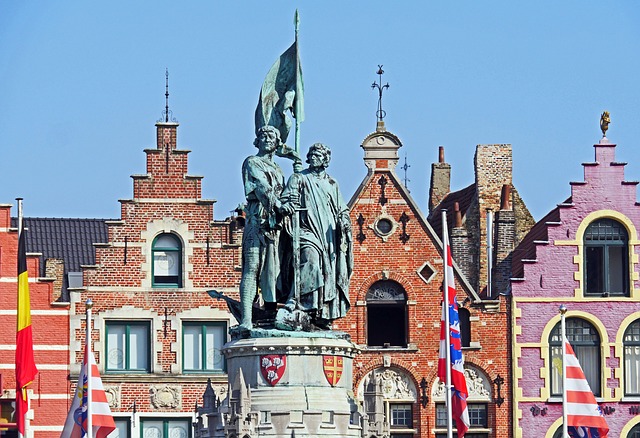
Toute une série de noms de pays étaient autrefois des adjectifs. Quand ils étaient associés à des noms féminins ils étaient aussi féminins car l’adjectif s’accorde en genre (et en nombre) avec le nom auquel il se rapporte.
Quand ils ont été transformés en nom, ils ont gardé leur genre. Par exemple, la Belgique s’appelait « Gaule belgique » où « belgique » est l’adjectif et Gaule le nom. « Belgique » est féminin comme le nom « Gaule » avec lequel il s’accorde. Le mot « Gaule » a été abandonné avec le temps et seul « Belgique » a été conservé.
Il en va de même pour l’Argentine. Lorsque l’État a été créé au 19e siècle, il s’appelait la « République argentine », et nous n’avons gardé que l’adjectif.
Noms de pays masculins qui viennent de noms d’hommes.
Les noms masculins sont moins fréquents. Parfois, ce sont des anthroponymes (des noms de personnes). Par exemple, avant d’être un état, Israël était le nom donné à Jacob par Dieu dans la Torah après qu’ils ont combattu toute la nuit. (Israël signifie « celui qui a combattu avec Dieu » en hébreu). Jacob étant un homme, le pays a gardé le genre masculin.
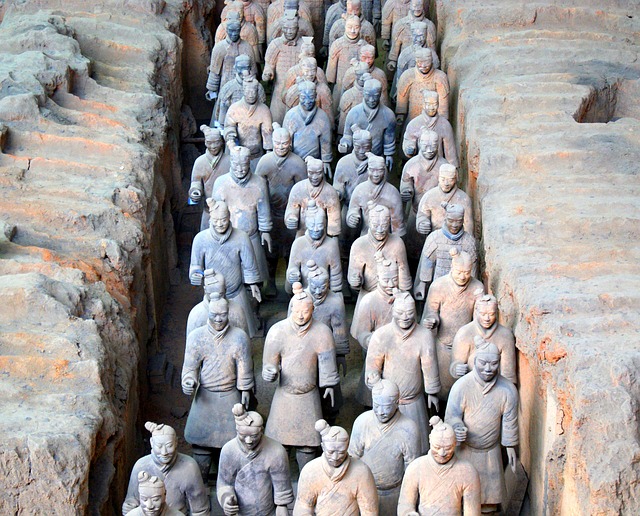
Notez que ce pays est masculin, mais n’est pas précédé d’un article (nous disons La France, le Portugal et Israël (pas l’Israël)).
Cela vient du fait que le pays était sous mandat britannique en 1948, et que les noms des pays en anglais ne sont pas précédés d’articles. Tous les traducteurs qui ont rencontré Israël dans les textes ont copié le nom sans article. En conséquence, les Français l’ont validé tel quel.
Évidemment, s’il n’y avait pas d’exception, ce serait trop facile. Par exemple, la Chine tire son nom de la dynastie Qin. On disait que l’empire Qin était prononcé « Tsin », puis il est devenu « Chine ». Peut-être que le fait que le mot se terminait par un « e » a contribué à une féminisation car habituellement le « e » est la marque des pays féminins.
Pays masculins dont le nom vient d’un fleuve
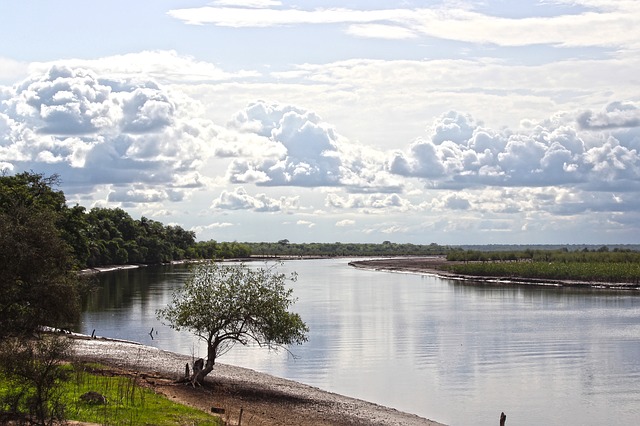
En Afrique, de nombreux pays sont masculins pour d’autres raisons. Plusieurs sont nommés d’après des fleuves, et les noms de ces fleuves africains étant masculins en français, les noms des pays on gardé ce genre : c’est le cas du Sénégal et du Congo par exemple.
Pays masculins nommés au 19e siècle
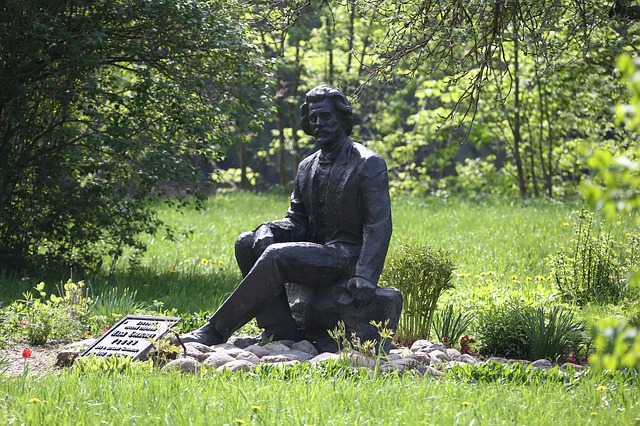
En général, à partir du 19e siècle, c’est le genre masculin qui est de plus en plus utilisé pour nommer de nouveaux pays.
Les noms des pays africains étant souvent relativement récents (20e siècle) ils sont, par conséquent, masculins. C’est pourquoi même certains pays en « a » sont masculins : leur nom a été récemment adopté en français. Par exemple le Nigeria (qui était féminin et a été masculinisé dans les années 1970) le Botswana, l’Angola, le Libéria.
En Amérique latine, le Venezuela, par exemple, (la petite Venise) a été introduit comme nom de pays au 19e siècle, donc masculinisé.
En Amérique du Nord, le Canada suit cette logique.
Au Moyen Orient, l’Iran a longtemps été nommé la Perse. À la fin des années 1920, les Pahlavi, la dernière dynastie iranienne avant l’avènement de la République islamique, ont décidé d’imposer le nom arabe du pays : l’Iran. Le 21 mars 1935, Reza Shah Pahlavi a publié un décret obligeant les pays étrangers à désigner désormais le pays de cette façon. C’était le 20e siècle, la mode était déjà au genre masculin pour les pays.
Quelques exemples :

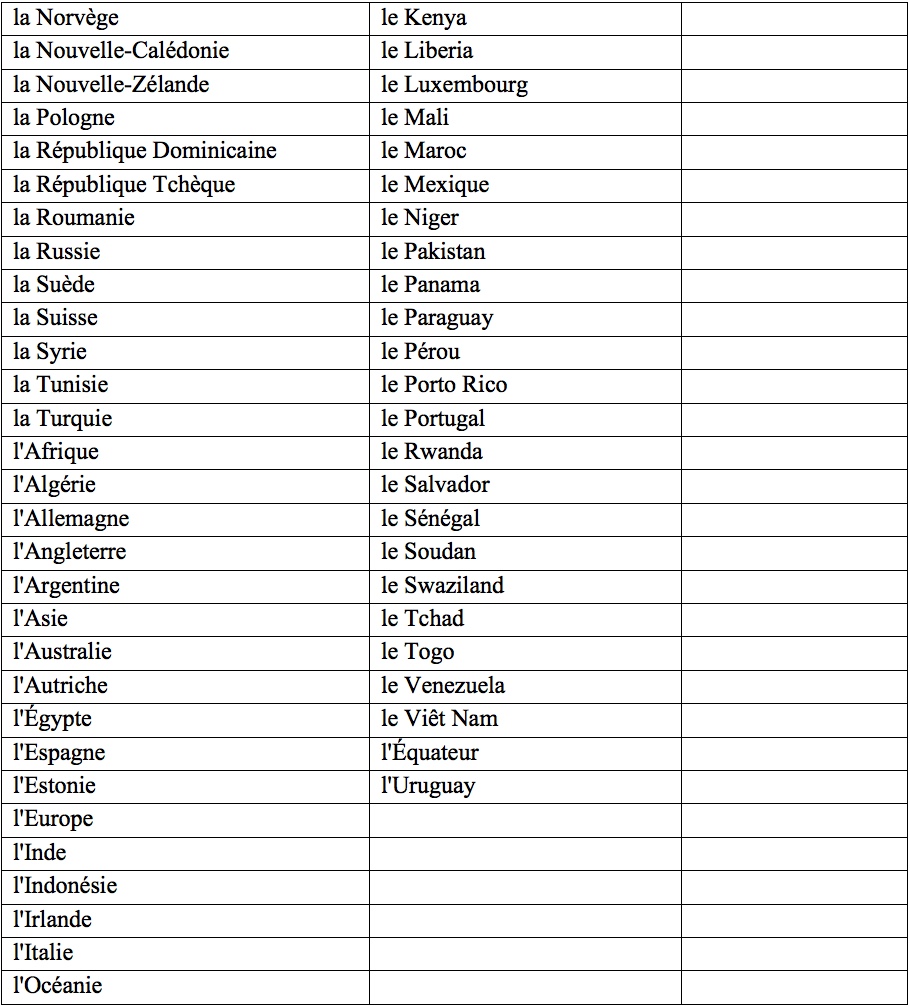
Voilà! J’espère que vous avez apprécié cet article, laissez-moi un commentaire ci-dessous pour me dire ce que vous en pensez.

Reçois mon ebook et mes stratégies pour progresser rapidement en français !
Receive my ebook and my strategies to progress quickly in French!
Inclus: DES PROMOTIONS sur mes formations et mon école envoyées dans mes e-mails.
This article in English :
Finding the gender of countries is a headache for non-French speakers: why are some countries masculine and others feminine? In the language class, you will learn that the countries ending with -e are feminine (except le Mozambique, le Zimbabwe, le Mexique) and the others are masculine. But you will probably have trouble knowing if the country ends with -e, so the problem is not completely solved. Here is a historical explanation that will shed light on this curiosity.
Feminine countries coming from Latin

Feminine names are the largest category of country names. There is a whole series that end in « -ie », they are all feminine. This corresponds to the Latin « -ia » or « -ie » which are found in the Roman languages. That’s why most of European countries are feminine.
Germany, for example, comes from “Allemania” and was deformed orally; Spain comes from “Hispania”.
Feminine countries coming from feminine adjectives

A whole series of country names were formerly adjectives. When they were associated with feminine names, changing into names, they kept their gender. For example, Belgium used to be called ‘’Gaule belgique’’ where « belgique » is the adjective and Gaule the noun. Gaulle is feminine, so is the adjective « belgique ». The word ‘’Gaule’’ was dropped with time, only ‘’Belgique’’ was kept.
The same goes for Argentina. When the state was created in the nineteenth century it was called the ‘’République argentine’’ and we have only kept the adjective.
Masculine names deriving from people’s names
Masculine names are less common. Sometimes they are named after anthroponyms (names of people). For example, before being a state, Israël was the name given to Jacob by God in the Torah after they had fought all night. (Israel means « the one who fought with God » in Hebrew). Israel having been a man, the country kept the masculine gender.

Note that it is masculine, but is not preceeded with a masculine article (We say La France, le Portugal and Israel (not l’Israel)).
This comes from the fact that the country was under British mandate in1948, and that the names of countries in English are not preceded by an article. All the translators who met Israel in the texts copied the form without an article. As a result, the Committee of French Foreign Affairs validated it as it stood.
Obviously, if there were no exception it would be too easy. For example, China derives its name from the Qin Dynasty. The Qin Empire was said to have been pronounced « Tsin », then it became ‘’Chine’’. Perhaps the fact that the word ended with an »e » contributed to a feminization because usually the »e » is feminine.
Masculine names deriving from rivers

In Africa, many countries are masculine for other reasons. Several are named after rivers, and the names of the African rivers having been masculine in French, the names of countries have remained: it is the case of Senegal and Congo for example.
Masculine names from the 19th century

In general, from the nineteenth century, it is the masculine gender that is more and more used to name new countries.
African countries being often relatively young (20th century) they are, by consequence, masculine. That’s why even some « a » countries are masculine: their name were recently adopted in French. For example Nigeria (which was feminine and was masculinized in the 1970s), Botswana, Angola, Liberia.
In North America, Canada follows the same logic.
In South America, Venezuela, (the small Venice) was introduced as a country name in the nineteenth century, therefore masculinized.
Iran was for a long time called Persia. At the end of the 1920s, the Pahlavi, the last Iranian dynasty before the advent of the Islamic Republic, decided to impose the Arabic name of the country : Iran. On March 21, 1935, Reza Shah Pahlavi published a decree requiring foreign countries to designate the country henceforth. It was the twentieth century, the fashion was already to the masculine gender.
Some examples :


Voilà! Hope you enjoyed !
Exercice : trouvez le genre des pays

VOUS VOULEZ AMÉLIORER VOTRE FRANÇAIS ?
c'EST LE BON MOMENT ET le MEILLEUR ENDROIT !
VISITEZ MON ÉCOLE de français en ligne.
YOU WANT TO BOOST YOUR FRENCH?
tHAT'S THE right MOMENT AND THE BEST PLACE!
LEARN ABOUT MY online SCHOOL.

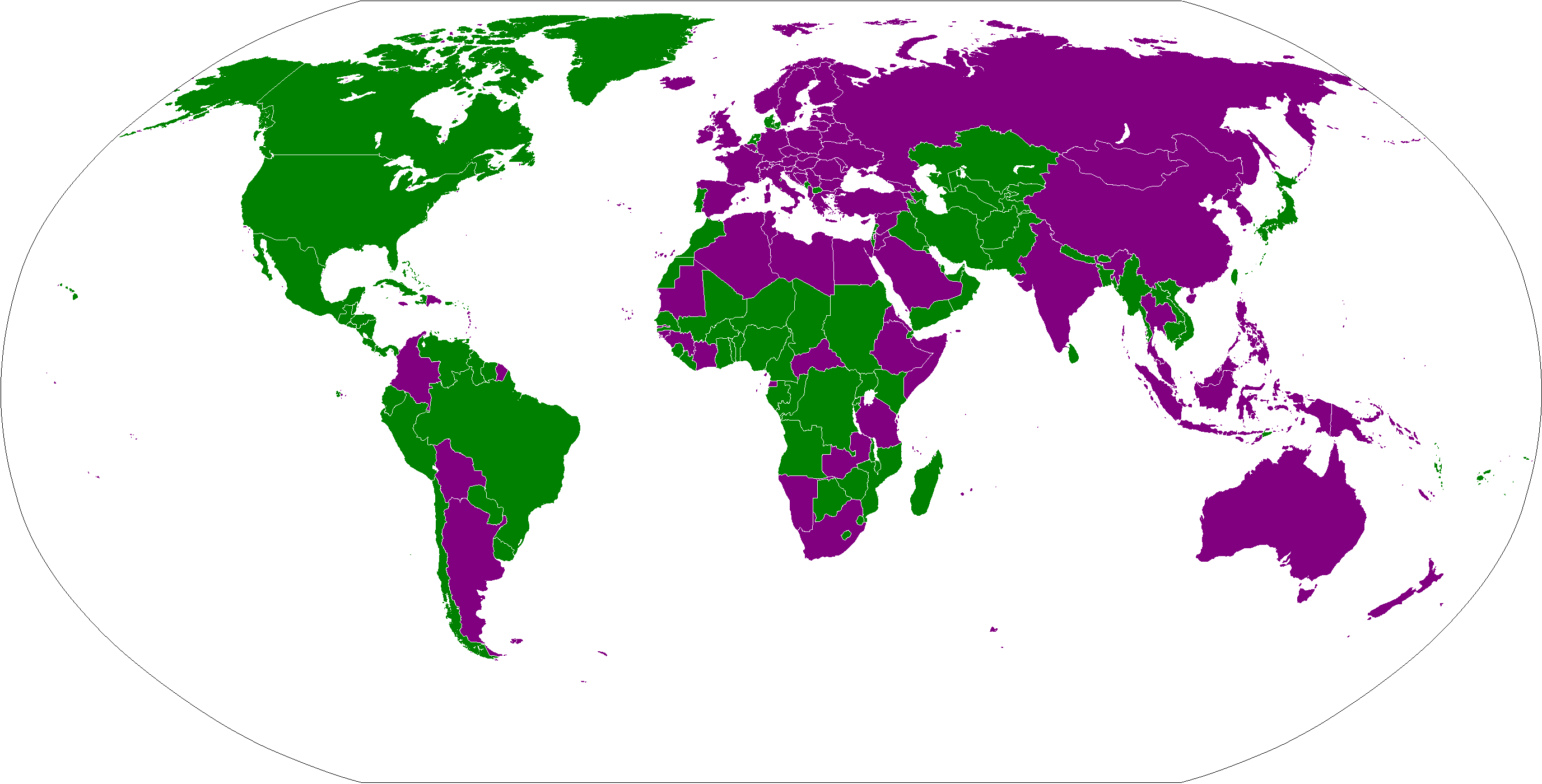

Thank you! I enjoyed reading this article.
Happy you liked it.
Thanks a lot, very helpful…now I know..merci!
Tant mieux, je suis contente 🙂
Super fin
Très intéressant, merci
Vous avez oublié l’Ukraine – pays en Europe, feminin.
Oui, c’est vrai. Je n’ai pas mis tous les pays. Ce sont des exemples. Je l’ajouterai.